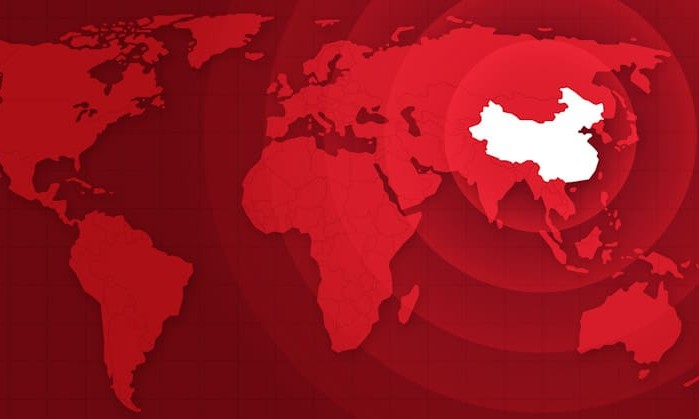
Latin America: How China Expands Influence
How China is expanding its influence in Latin America amid the US-China trade war.
BY DIEGO RODRÍGUEZ
Americas Market Intelligence
The ongoing US-China trade war, which began in earnest under President Donald Trump’s administration, has not only reshaped global supply chains and tariff regimes — it has also triggered a profound geopolitical shift in Latin America. As Washington adopts a more protectionist stance and pulls back from multilateral engagement, Beijing has seized the moment to deepen its economic, diplomatic, and political presence across the region.
From infrastructure financing and trade in agricultural goods to expanding its voice in multilateral institutions, China is no longer just a rising partner — it’s rapidly becoming a strategic anchor in South America. This article examines how China is capitalizing on the void left by the United States to expand its influence across South America.
A Retreating U.S. and a Rising China
When the Trump administration launched its aggressive tariff campaign against Chinese imports in 2018, it also signaled a broader reorientation of U.S. foreign policy. “America First” translates into a partial retreat from international organizations and aid commitments. Institutions such as the World Health Organization (WHO), the Pan American Health Organization (PAHO), the Inter-American Development Bank (IDB), and even the United Nations experienced a decline in U.S. funding.
This retrenchment did not go unnoticed, least of all by China.
According to experts speaking at recent policy forums, Beijing viewed the U.S. retreat as a golden opportunity. “The Chinese are more than happy to step in and fill the funding gap.” Beijing has long sought a greater role in multilateral bodies. Now, with Washington withdrawing, the door is wide open for China to assert leadership, not just economically, but diplomatically and institutionally.
Yet this shift is far from uniform. In Central America and the Caribbean, U.S. influence remains strong, recently reaffirmed during Secretary of State Marco Rubio’s 2025 regional tour under the renewed Trump administration. During visits to Panama, El Salvador, Guatemala, Costa Rica, and the Dominican Republic, Rubio announced a series of targeted initiatives: expanding deportation flights by 40% from Guatemala, launching a new Border Task Force to counter drug trafficking in northern Central America, offering DEA and FBI cooperation to Costa Rica, and pressuring Panama to reduce Chinese control over strategic port infrastructure in the Canal as military concerns grow in the US with a potential confrontation over Taiwan.
These actions are a clear indication that the U.S. is strengthening its strategic influence over the subregion, particularly in security, migration, and telecommunications policy.
In contrast, South American countries like Brazil, Peru, Argentina, and Colombia are drawing closer to China. From large-scale Belt and Road investments to bilateral trade agreements and e-commerce expansions, Beijing is embedding itself in the continent’s economic architecture. These developments reveal a growing hemispheric divide — one where U.S. power is consolidating in the north, while Chinese influence deepens in the south.
- Bilateral Lending and Investment Surge in 2025
In 2025, China significantly intensified its economic engagement with Latin America, unveiling a series of substantial investments and credit lines aimed at bolstering infrastructure, energy, and technological development across the region.
$9.2 Billion Credit Line to Latin America
At the China-CELAC Forum held in Beijing in May 2025, President Xi Jinping announced a $9.2 billion credit line to Latin American and Caribbean nations. This initiative aims to support development projects and promote the international use of the yuan, signaling China’s commitment to deepening economic ties with the region.
Brazil Secures $4.8 Billion in Chinese Investments
During the same forum, Brazil emerged as a significant beneficiary, securing approximately R$27 billion (about $4.8 billion) in Chinese investments. These agreements encompass various sectors, including agriculture, mining, energy, and economic cooperation, reflecting the strengthening bilateral relations between the two nations.
Colombia Joins the Belt and Road Initiative
In a notable shift, Colombia signed an agreement to join China’s Belt and Road Initiative (BRI) in May 2025. President Gustavo Petro’s decision marks a significant realignment in Colombia’s foreign policy, which has traditionally been aligned with the United States. The move is expected to attract Chinese investments in infrastructure, energy, and technology sectors, enhancing Colombia’s connectivity and economic growth prospects.
Argentina’s Lithium Sector Attracts Major Chinese Investment
In February 2025, China’s Ganfeng Lithium inaugurated a lithium chloride production facility in Salta Province, Argentina, with an investment of $980 million. This project underscores China’s strategic interest in securing critical minerals and highlights Argentina’s role as a key supplier in the global lithium market.
In parallel, Chinese companies have acquired strategic assets —lithium fields in Bolivia and energy grids in Chile. These investments are not merely commercial; they anchor long-term Chinese influence in the region’s critical infrastructure.
- The Agricultural Pivot: Food Security and Diplomacy
China’s domestic food security concerns have also catalyzed a shift in its trade priorities with Latin America. As Chinese tariffs on U.S. soybeans and other commodities escalated during the trade war, Latin America — especially Brazil and Argentina — became essential suppliers.
According to trade data, Brazilian soybean exports to China surged from $20 billion in 2017 to almost $50 billion in 2025, effectively replacing U.S. suppliers. Brazil exported around 15.7 million tons of soybeans to China in March 2025 alone, marking the highest monthly volume ever recorded and accounting for over 70% of Brazil’s soybean exports, reflecting a significant shift in trade dynamics.
Similarly, meat, corn, and fruit exports from Chile, Uruguay, and Peru to China have surged, helping Beijing diversify its agricultural dependence away from the U.S.
This trade dynamic has also given China new leverage. In exchange for large-scale commodity purchases, Beijing often negotiates for infrastructure concessions, digital technology access, or diplomatic alignment on international issues, from Taiwan to climate policy.
- China’s Push for Institutional Influence
One of the more underreported trends is China’s growing presence within multilateral organizations relevant to Latin America. Beijing has increased its voting power and contributions to institutions such as:
- The Inter-American Development Bank (IDB) — where China has been a non-borrowing member since 2009.
- The United Nations Economic Commission for Latin America and the Caribbean (ECLAC) — where it now engages more frequently.
- The Community of Latin American and Caribbean States (CELAC) — with which China holds regular ministerial summits.
For China, these relationships are strategic. By participating in rulemaking and funding at multilateral levels, it shapes the development agenda and positions itself as a counterbalance to U.S.-led models of governance and aid.
4. E-Commerce and the New Digital-Logistics Nexus: China’s Tactical Push into Latin America
Following the elimination of the de minimis exemption on low-value Chinese imports by the U.S., Chinese platforms are recalibrating their global strategy. This has prompted a renewed focus on Latin America — a region with growing middle-class consumption and rising digital penetration.
Chinese E-Commerce Set to Surge 47% in Latin America
In 2025, platforms such as Temu, Shein, and AliExpress are expected to increase their Latin American sales by an estimated 47% year-over-year, nearly doubling their regional revenues. These figures are based on a proprietary market modeling exercise combining:
Chinese platforms are projected to account for 13% of Latin America’s over $100 billion online retail market in 2025. That translates to over $13 billion in projected regional sales, underscoring the aggressive growth trajectory.
Logistics Overhaul: Chancay Port as China’s Regional Gateway
To sustain this level of e-commerce volume, China is not merely relying on digital marketing or platform optimization — it is investing in physical logistics control.
The centerpiece of this strategy is Chancay Port in Peru, a landmark project co-developed by Cosco Shipping. Chancay is expected to become China’s intra-regional consolidation hub, akin to the role played by hubs in Southeast Asia for Chinese exports.
The model is simple but powerful:
- Products manufactured in China are shipped to Chancay
- From there, goods are warehoused, sorted, and redistributed to major consumer markets such as Brazil, Colombia, Chile, and Ecuador
- Transit times are optimized to 20–25 days, making it a cost-effective alternative to air freight for products above the de minimis threshold
Hence, China’s ability to build regional inventory hubs circumvents customs bottlenecks, allowing it to offer competitive delivery times without relying on air freight.
Surveillance vs. Service: The Dual Nature of China’s Digital Engagement
While the emphasis in 2025 is on logistics and commerce, China’s digital infrastructure ambitions in Latin America remain closely tied to its strategic interests. Its investment in smart ports, digital payment systems, and logistics tracking platforms may enhance supply chain efficiency — but also raise questions about data sovereignty, cybersecurity, and surveillance capacity.
As more of Latin America’s retail and logistics data flows through Chinese platforms and port systems, governments and analysts are beginning to debate:
- Who owns the consumer and logistics data?
- How is cross-border information stored and monitored?
- Could critical supply chain systems be subject to geopolitical influence?
- The Bigger Picture: Infrastructure and Influence
The growth of Chinese e-commerce in Latin America is not a standalone phenomenon; it provides them with systemic leverage across both digital and physical supply chains.
- Diplomacy and the Taiwan Question
China’s influence is also playing out in the diplomatic arena. Since 2017, three countries in Latin America — Panama, the Dominican Republic, and El Salvador — have switched diplomatic recognition from Taiwan to China, following substantial Chinese investments and infrastructure promises.
Beijing’s strategy is clear: use economic carrots to isolate Taiwan on the world stage. And it’s working — of the 13 countries that still recognize Taiwan diplomatically, just four are in Latin America and the Caribbean as of 2025.
Diego Rodríguez is Director of Logistics Practice at Americas Market Intelligence.
Republished with permission from Americas Market Intelligence.
RELATED ARTICLES
How DiDi Adapts to Latin America’s Era of Digital Platforms












